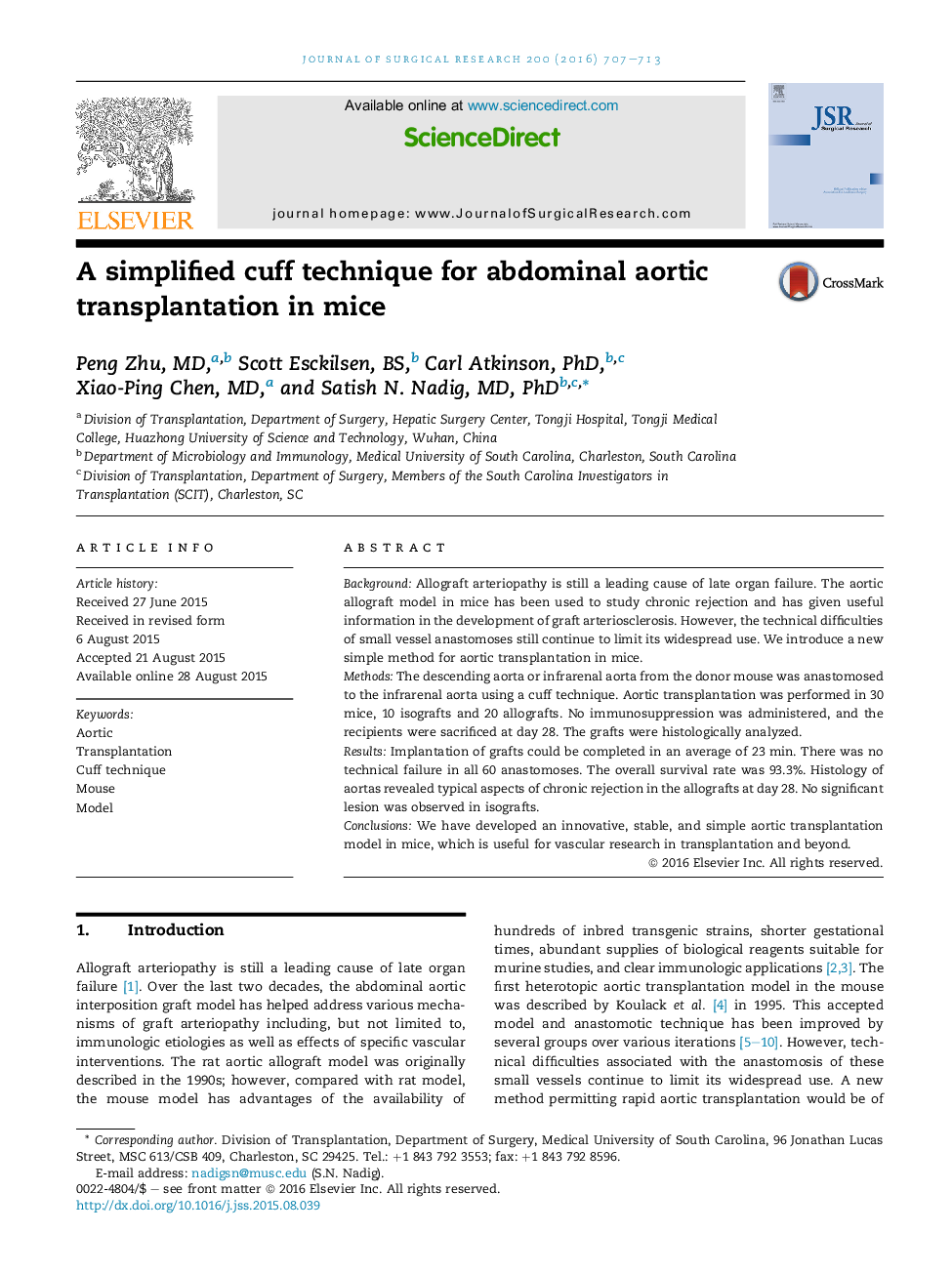| Article ID | Journal | Published Year | Pages | File Type |
|---|---|---|---|---|
| 6253444 | Journal of Surgical Research | 2016 | 7 Pages |
BackgroundAllograft arteriopathy is still a leading cause of late organ failure. The aortic allograft model in mice has been used to study chronic rejection and has given useful information in the development of graft arteriosclerosis. However, the technical difficulties of small vessel anastomoses still continue to limit its widespread use. We introduce a new simple method for aortic transplantation in mice.MethodsThe descending aorta or infrarenal aorta from the donor mouse was anastomosed to the infrarenal aorta using a cuff technique. Aortic transplantation was performed in 30 mice, 10 isografts and 20 allografts. No immunosuppression was administered, and the recipients were sacrificed at day 28. The grafts were histologically analyzed.ResultsImplantation of grafts could be completed in an average of 23Â min. There was no technical failure in all 60 anastomoses. The overall survival rate was 93.3%. Histology of aortas revealed typical aspects of chronic rejection in the allografts at day 28. No significant lesion was observed in isografts.ConclusionsWe have developed an innovative, stable, and simple aortic transplantation model in mice, which is useful for vascular research in transplantation and beyond.
